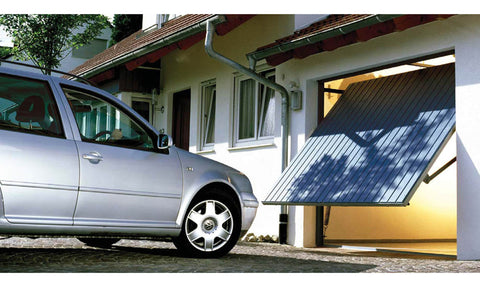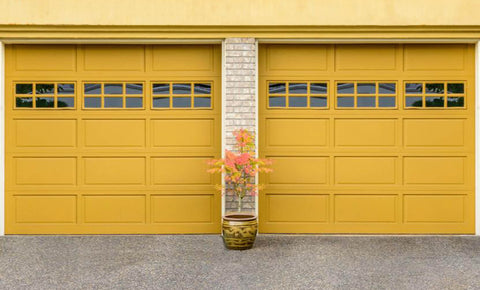Your garage door is constructed to withstand a lot of abuse, especially from harsh winter weather. Yet your garage door can’t do its job all by itself. No matter how strong and durable a garage door is, it can and will break down over time, if left to face the elements on its own. This can become a big problem for you and your home, because the garage door often is the first and last line of defence your garage has from rain, snow, outside debris and vermin.
It’s up to you to make sure your garage door is kept in the best possible condition so it can continue to protect your garage and your home for as long as possible before it needs to be replaced. If you’re interested in learning how to winterize your garage, these tips will help you ensure your garage door is ready for whatever the season throws at it.
Keep Everything Tight
One of the most important tips you need to remember for winterizing your garage door is making sure everything on it is kept tight. Because a garage door typically moves up and down many times a day, it’s only natural that all that movement can start to take a toll on the door’s hardware. When vibration starts to loosen the hardware, gaps can appear in the door and allow cold air and snow into your garage. Make sure your garage door is ready for winter by tightening all of the door’s bolts with a socket wrench.

Examine the Cables
Your garage door uses high-tension steel cables to lift and lower it. Even though these cables have to be incredibly strong, they can’t last forever. Before winter settles in, be sure to inspect these cables to look for signs of wear. Any signs of fraying should be a cause for concern because winter’s bitter cold can make these cables brittle and lead to further damage. Never attempt to repair or replace these cables yourself, because of the extreme tension they’re under means they can snap and cause severe or fatal injuries.
Lubricate All Moving Parts
Another important element of winterizing your garage door is making sure all of its moving parts get proper lubrication. Not only will this help guarantee that those moving parts don’t damage one another, but it will provide them with a layer of protection against the elements. A spray lubricant made specifically for garage doors is all that should be needed.
Take Care of the Rollers
Although your garage door itself might last for decades, not all of its components can last as long. For example, your garage door’s rollers will need to be inspected and replaced every several years. Whether they are steel or nylon, your garage door’s rollers can become worn and chipped over many years of constant use. It’s important to remember to inspect them before winter comes so you can replace any rollers.
Check and Replace Weather Stripping
Making sure your garage door has adequate weather stripping on its bottom edge is one of the most important parts to inspect when it’s time to winterize your garage. If the weather stripping at the bottom of your garage door is cracked or falling apart, it can be as if there’s nothing there at all because water, dirt and bugs can still get into your garage. Before winter arrives, check your garage door’s weather stripping and replace it if it appears to be brittle, cracked or falling apart. Refer to our guide here for choosing a new garage door threshold that’s right for your garage.
Test the Balance
If your garage door’s balance is out of whack, the motor of your garage door opener will have to work much harder to lift and lower it; putting undue stress on it over the harsh winter months and making it more vulnerable to damage. As you winterize your garage, you’ll want to make sure that your garage door is properly balanced. You can do this by pulling the release handle while your door is closed to disconnect it from the opener. Then, lift your garage door manually — about halfway. If the door stays in that position, it means the counterweight system is properly balanced. If it doesn’t, that means you’ll need to call in a professional to rebalance the springs.
If properly prepared for harsh winter conditions, your garage door will continue to protect and serve you and your home for a long time. If it’s time to winterize your garage, these tips can help you make sure your garage door will be up to the challenge.



